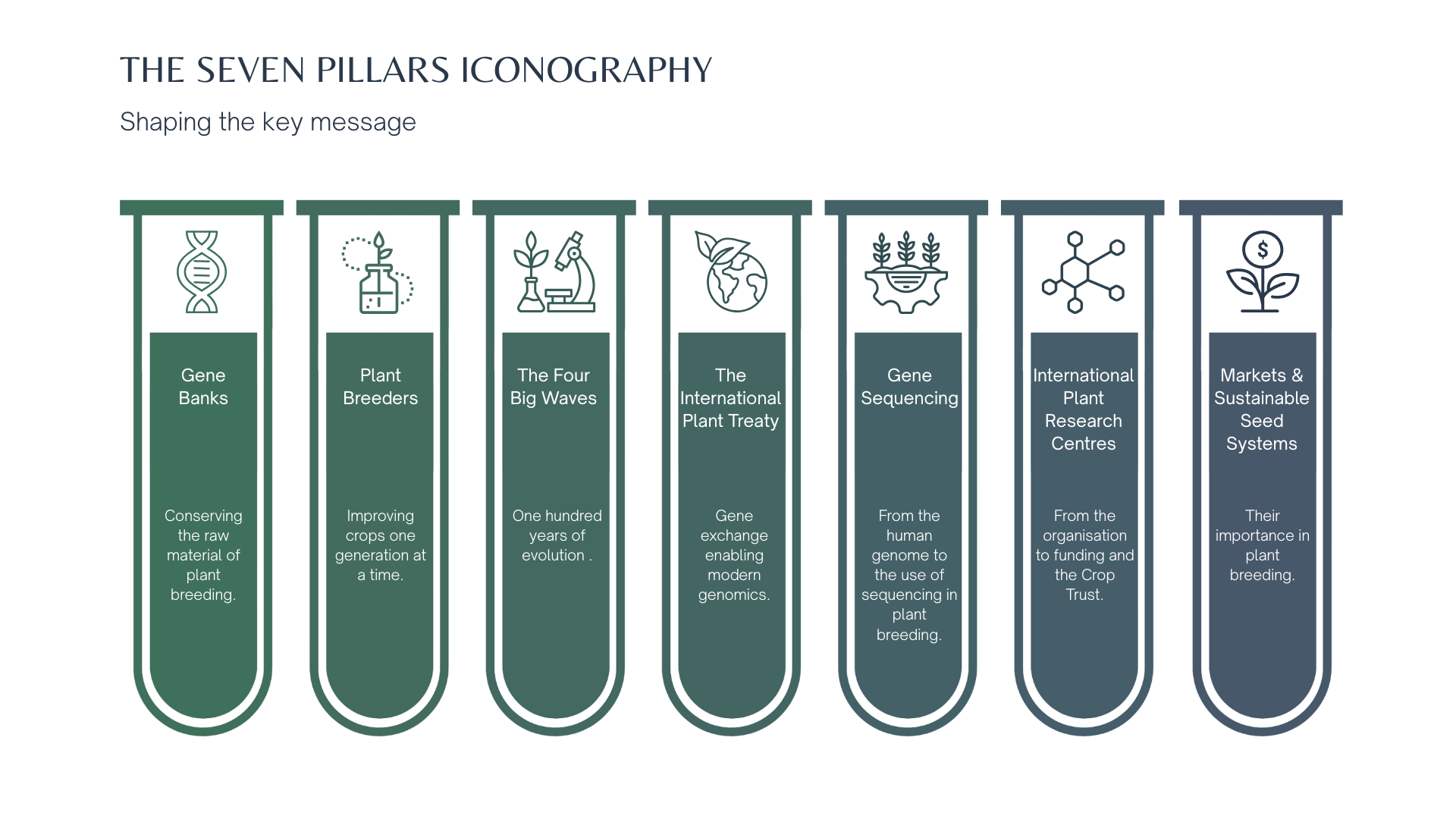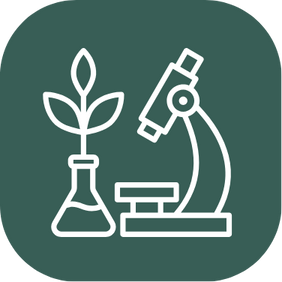
The Seven Pillars
The story of The Super-Seeders is just built not on personalities or single discoveries, but on the alignment of seven global forces. These are the Seven Pillars of the plant genetics revolution.
The story of The Super-Seeders is built not on single discoveries, but rather on the alignment of seven global forces. These are the Seven Pillars of the plant genetics revolution.
Each one represents a breakthrough that, on its own, changed how we think about agriculture. But together, they are reshaping its future, especially for smallholder farmers in the Global South, where the need for resilient, high-yield crops has never been greater.
Miles Hillmann
Author



Gene banks store the seeds, traits, and genetic potential of tens of thousands of plant varieties. Without this diversity, modern agriculture cannot respond to the threats of climate change, crop disease, or population growth. These collections are our living insurance policy. And yet most people don’t know they exist.
Population growth was outpacing crop yields, and famine loomed, especially in the Indian subcontinent. Two scientists helped change that. Norman Borlaug, often called the father of the Green Revolution, developed high-yielding wheat varieties. But it was M.S. Swaminathan who ensured their success by adapting them to Indian conditions, policies, and people. Together, they averted mass hunger and reshaped the future of agriculture. This partnership showed that science alone isn’t enough, local insight and political will are just as vital.



International plant genetics research centres sit at the heart of the global effort to safeguard crop diversity and accelerate innovation. Institutions within the CGIAR network and beyond bring together scientists, breeders, and policymakers to conserve genetic resources, develop improved crop varieties, and respond to emerging threats such as climate change, pests, and disease. By working across borders and crops, these centres ensure that advances in plant genetics are shared widely — translating cutting-edge research into practical solutions for farmers and food systems around the world.
Modern genetics builds on past advances of countless scientists from Darwin and Mendel, through Watson and Crick through to Charpentier and Doudna. It is not the purpose of this book to look at the contribution that each of these makes to plant genetics. But here are two examples of sciences that are behind and include the new genetics crucial to plant breeding. They are the understanding of plant immunity and prebreeding



The Treaty on Plant Genetic Resources enables countries to share seeds and genetic material in a structured, fair way. This global framework ensures that the world’s genetic diversity can be used for the common good, by scientists, breeders, and farmers. Without this agreement, the genetic building blocks of crop innovation would be locked away.
Once a rare and expensive process, sequencing is now central to plant breeding. Researchers can map entire genomes to identify traits, compare varieties, and track lineage. This digital understanding of crops speeds up innovation and makes it easier to work with wild relatives and underused species with hidden potential. Modern genomics is ubiquitous, and future developments will have a massive impact. Legislation will temper the speed of implementation.



Even the best crop varieties are useless if farmers can’t access them. Sustainable seed systems connect breeders to markets — ensuring high-quality seed is multiplied, distributed, and adopted. These systems also protect farmers’ rights, reward innovation, and ensure that diversity and impact reach the people who need them most.

The story of The Super-Seeders is just built not on personalities or single discoveries, but on the alignment of seven global forces. These are the Seven Pillars of the plant genetics revolution.

Gene banks may not look like much — but they hold the keys to feeding the future. As climate change and crop loss rise, these seed libraries are quietly safeguarding the genetic diversity our food system depends on. Discover why we need them more than ever.

The International Plant Treaty helps ensure the world’s most essential crops remain accessible for breeding, research, and climate resilience. In this post, we explore the story behind the treaty, from a boy collecting melon seeds in Spain to today’s digital battles over genomic data.